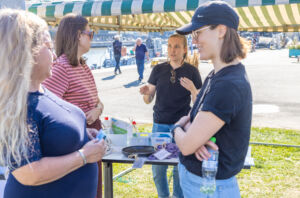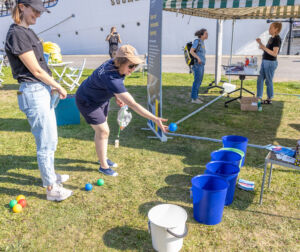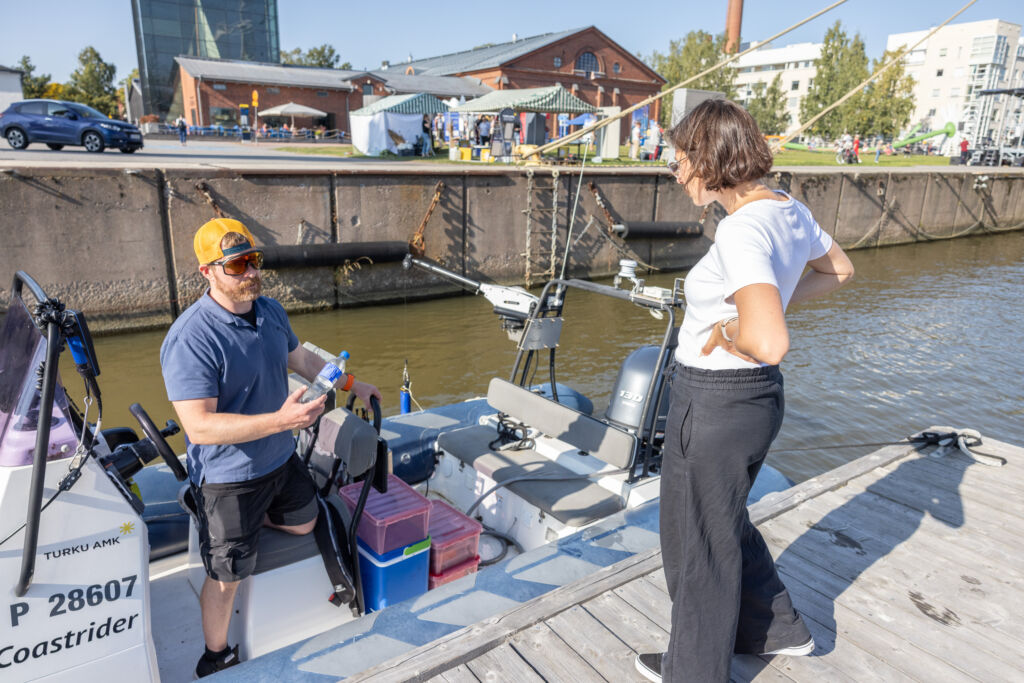Students Designed an Interactive booth for Baltic Sea Day – Positive Reception Surprised
What’s it about?
The Baltic Sea is highly polluted, and eutrophication in particular threatens its fragile ecosystem. The Baltic Sea Day, initiated by the John Nurminen Foundation, is celebrated on the last Thursday of August across Finland. The annual Baltic Sea Day aims to inspire people to take concrete actions and make promises for the benefit of the Baltic Sea. In Turku, the event was held on August 29th, organized by several actors.
The Water and Environmental engineering research group also set up their tent at the event site. This year the group’s higher education students got to design, among other things, their own chemical booth for the Baltic Sea Day.
Positive reception surprised
Our research group’s themed booths were designed to be as interactive as possible. For instance, people gathered to examine the water quality of the Aura River from a research boat, while others immersed themselves in listening to underwater noise from an armchair. Children also got to participate in their own underwater research through games and creativity. A drawing table with coloring pictures and word puzzles was set up for them.

At the booth of harmful chemicals, it was surprising how much interest chemicals as a topic created. Many found it important to chat and exchange thoughts about the chemical load of the Baltic Sea. Some, on the other hand, began to reflect more generally on the chemicalization of nature and how they themselves could influence and choose more environmentally friendly products through their decisions.

Various products, ranging from kitchen utensils to hygiene products and clothing, were collected on the table. The attached information tags explained what harmful chemicals the products might contain, their effects on human health and the environment. One can easily reduce one’s own and the environment’s chemical load by choosing eco-labeled products.
The “Match the Chemical and Claim” -throwing booth encouraged participants to test their knowledge of chemicals.
We were delighted to notice that many cottage owners already seemed to know a lot about chemicals and the situation of the Baltic Sea. Others had become familiar with the topic through other subjects, such as beekeeping.
Saving the Baltic Sea together
The Baltic Sea Day was successful in many ways. We managed to evoke new thoughts about protecting our sea, and many people began to consider their own contributions in the fight against environmental chemicalization.
Others left grateful for discovering new ways to influence both their own chemical load and the situation of the Baltic Sea. One can easily make a difference by choosing products marked with a reliable eco-label, such as the EU Ecolabel or the Nordic Swan Ecolabel.
The situation of the Baltic Sea is challenging, but everyone can influence its development through decisions. Even small droplets can together form a big wave.

Writer: Ada Potinkara/Student assistant in Water and Environmental Engineering research group
